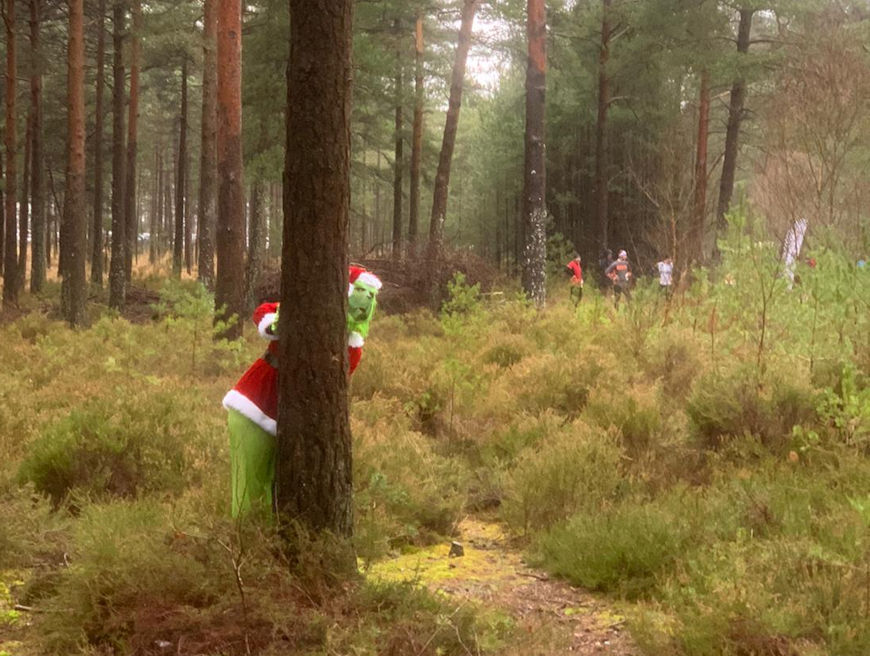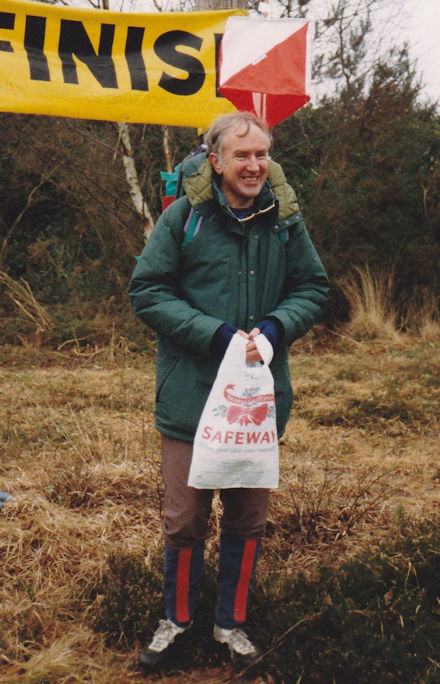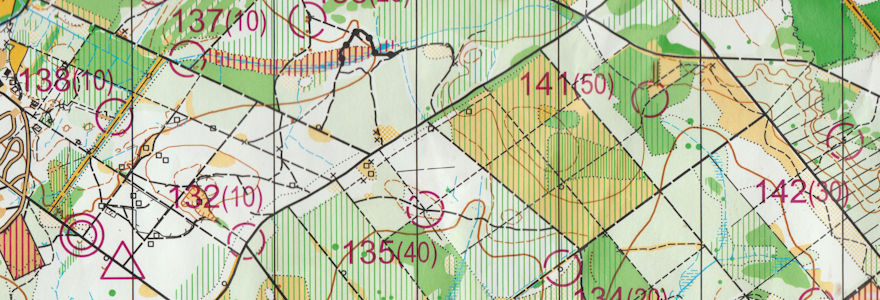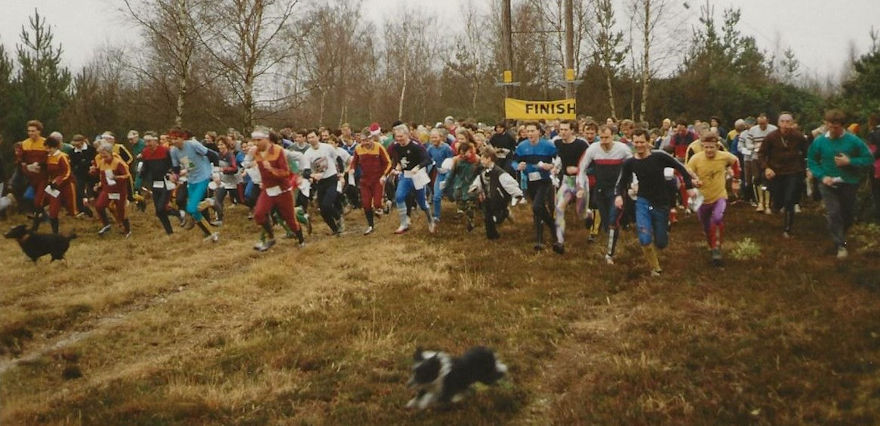‘Wet, wet, wet’ - Boxing Day Canter 2019
Congratulations to ’Team Pickering’ for putting on a memorable event on the 49th anniversary of the first Canter. Despite the truly appalling wet weather the challenge was enjoyed by some 200 Orienteers, who all seemed to be smiling broadly as they headed past download towards the refreshment tent for mulled wine and mince pies.
Preparations had gone smoothly up to about 9am when we discovered that Moors Valley barriers were locked! Fortunately they were opened by 9.30 and with mountain bikes everything was ready on time and the start of the 1 hour score event. Under Kevins avuncular direction the start was very little delayed despite the inevitable late arrivals.
With the use of electronic timing and the skills of Dick Keighley and Jim Graham provisional results were published on line by late afternoon when in true British weather the sun came out!
The 2019 course - click map to view larger segment



|
...And a bit of history!
What a contrast to how it was prior to the digital era! Read on for a bit of history!
For many years not only did the Planner have to identify suitable control sites, but he/she had to physically overprint the competition map. Most of you won’t have come across hand overprinting using little rubber circles and numbers placed on a map and then attached to a hand over-printer with a ‘sticky’ surface. Then using an inked pad and a large wooden frame the map was printed, accurately, you hoped! After this every map had to be checked to make sure that circles were correctly printed before being put into clear polythene bags which were then heat sealed and often rolled into a tube shape. It was always wise to keep the printer fully set up because if a lot more people turned up on the day you had to print off some more maps shortly before map issue!!!
Entry was ‘on the day’ so a Registration team was needed to take money, get competitor details and issue a ‘Control Card’ which not only had details of the competitor but also had to be carried and punched at each control visited using unique pin punches hung from the control flag by the planner who had previously created a ‘Master punch Card’ for the results team.

After map issue and the now familiar briefing, the Mass Start was at or about 11am and competitors vanished into the forest. The ‘novelty controls have varied from year to year but one of the more memorable ones was Jeremy Tonge as the ‘Fairy’ running all over the forest dressed in a ‘Tu-tu’ greeting astonished competitors with ‘Trust me I’m a Doctor’! The planning/organising team had a short break before the next pressure point, the Finish! Unlike a normal Orienteering event where everyone usually approaches the finish along tapes from one direction, in the ‘Canter’ they can come from any point of the compass so it is as well to locate the finish on a large junction with plenty of space.

On many occasions I have acted as the ‘Finish’ having a Control Flag on a stake attached above my head so as to be visible from all directions ( see photo). In the ‘free fight’ few minutes between 58 and 62 you are assaulted by incoming runners from all directions are each fighting to get their control card into the box that you are carrying. As each minute is reached you pass the box of control cards to an ‘assistant’ in exchange for an empty one for the next minute. The pressure is short lived but it often felt like being in a Rugby scrum! Now you have several boxes/bags of control cards with competitor details on them and punch patterns in the appropriate boxes, for each minute. They need to be secured and bundled up into timed 1 minute groups for processing. Once all competitors safely back you need to deploy members of your helping team to collect the controls.(That is something that hasn’t changed!) Everyone naturally wants to see their results as soon as possible, but this wasn’t possible in the pre-electronic days and you had to be patient! |
|
 |
Either as a family or with willing assistants you would now move indoors to say the Dining table, to process the bundles of results. The control card carried by every competitor should have on it the competitors details and a collection of pin punch patterns which you had to compare with master cards prepared previously and total their score Note the word ‘should’! Most are OK but if as the recent ‘Canter’ it had rained the cards may be soaked and we have on several occasions had to put them in the oven to dry and then have to decipher the ‘ghost’ punch patterns.
We are nearly there, and having checked for correct punches in correct spaces the cards can then be assembled into score order for the results to be typed, duplicated and despatched to those competitors who have left sae’s. This always meant waiting for results to arrive according to the efficiency of the club team.
As you know, things have changed dramatically but it was always a tribute to the resource of the Planner, Organiser and a support team how quickly results could be produced. As a tail piece JK 1997 at Penhale in Cornwall had 4,400 competitors and was the last major event to use the manual punching system. There were 26 different courses and the results team, led by Roger Hargreaves of Kerno, were processing results and putting them on display within about 20 mins of competitors finishing, and they repeated this performance on both days.
There’s more to Orienteering than you think!!
John Warren
The 1992 mass start - click to view original photo

